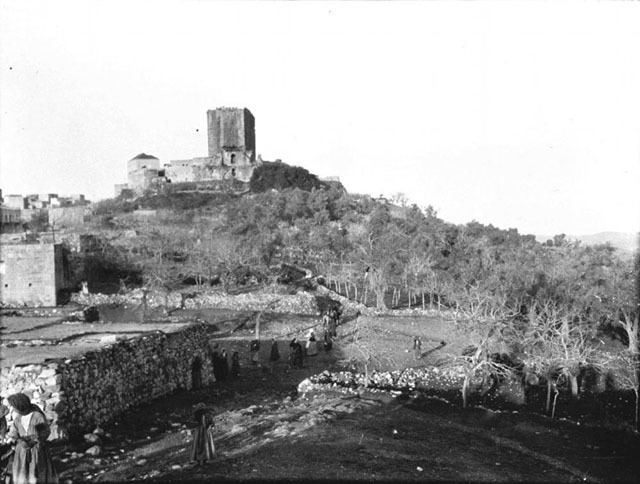 | ||
Hours Open today · Open 24 hoursFridayOpen 24 hoursSaturdayOpen 24 hoursSundayClosedMondayOpen 24 hoursTuesdayOpen 24 hoursWednesday(Revolution Day)Open 24 hoursHours might differThursdayOpen 24 hours Similar Chastel Rouge, Margat, Krak des Chevaliers, Château Pèlerin, Citadel of Salah Ed‑Din | ||
Chastel Blanc (Arabic: برج صافيتا, Burj Safita or Safita Tower) was built by the Knights Templar during the Crusades upon prior fortifications. Constructed on the middle hill of Safita's three hills, it offers a commanding view of the surrounding countryside, and was a major part of the network of Crusader fortifications in the area. From the roof, one can see from the Mediterranean Sea to the snow-covered mountains of Lebanon, and Tripoli. From Chastel Blanc it would have been possible to see the Templar strongholds at Tartus and Ruad Island to the northwest, Chastel Rouge on the coastline to the southwest, Akkar to the south, and Krak des Chevaliers (the headquarters of the Syrian Knights Hospitallers) to the southeast. The tower is the remaining keep of the original castle. It has a height of 28 metres (92 ft), a width of 18 metres (59 ft), and a length of 31 metres (102 ft). A large bell is on the western wall, and its sound can be heard up to 5 kilometres (3.1 mi) from Safita. The castle had to be restored in 1170 and 1202 following damages due to earthquakes. The keep in its current shape probably dates from the reconstruction after 1202.
Considering the time of its construction during the Crusades, the tower served two purposes, as both a chapel and a fortress, with 3 metres (9.8 ft) thick walls constructed of massive and carefully fitted limestone blocks. The ground floor still contains a chapel, dedicated to St. Michael and used by the Greek Orthodox community of Safita. The second floor, which can be reached by a flight of partially destroyed stairs, served as a dormitory, and contains many small angled windows that were used by archers to defend the tower. Cut into the rock below the tower is a water cistern and a former weapons cache, essential elements in case of siege.
From the other fortifications of the castle, only a portal at 45 metres (148 ft) to the east of the keep can still be seen today. During French colonialism, efforts were made to restore the tower, causing great discomfort to the villagers that lived very close to it.
In 1946, when the castle's keep threatened to collapse, architect Pierre Coupel undertook an intensive programme of repairs.
